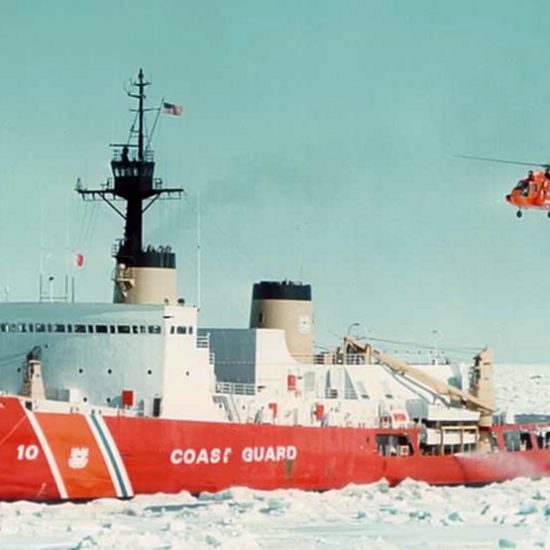
By Ben O'Rourke
September 9, 2021
A couple of months ago, Joe Biden ripped a page straight from the Donald Trump guide on how to be a president. Faced with the reality China controls the biggest chunk of the rare earth market and has taken the lead in crucial supply chain steps, he threatened to slap tariffs on Beijing.
Chinese magnets used in everything from gadgets to electric cars could be a security risk, the White House said, so it would need to investigate. The move was part of measures aimed at taking some of the control of the supply chain out of China’s hands.
Canada’s Ucore Rare Metals is preparing to enter the lucrative processing sector, which would reduce reliance on Chinese firms, and Alaska will play a key role. Before the end of 2023, the company wants to start building its processing plant in Ketchikan.
Once up and running, the business will fund rare earth excavation at the Bokan Mountain mine on Prince of Wales Island, although the final details for that deal with the mine owner still need to be ironed out. A 2015 report estimated 4.7 million metric tons of rare earth ore inside the mine.
Ucore CEO Pat Ryan told the Alaska Journal of Commerce that officials in Beijing steered firms towards processing concentrates into metal oxides so it could influence tech markets and force the rest of the world to use China-based facilities. Something needed to be done locally, Ryan said, otherwise the supply chain step “will be lost to China.”
Sending rare earths to China for processing is expensive, so setting up plants here is a no-brainer. Besides Ucore, Colorado-based Energy Fuels, Canada’s Neo Materials, and Lyans from Australia are at different stages in their plans for the construction of processing facilities across North America.
Ucore began testing its separation technique earlier this year. Ryan said it’s based on existing methods but is cheaper and doesn’t take up as much room. Plans for the proposed plant should be ready not long into 2022, depending on how the tests go. Ryan is confident about the results and says his only concern is what China might do to try to scuttle the supply chains of U.S. companies once it loses its advantage.
As well as tablets and smartphones, rare earths are used in the defense industry, notably Lockheed Martin’s F-35 fighters which need more than 400kg of rare earth materials in each one, according to a research report commissioned by Congress. Beijing has hinted it could block exports to the US with the specific intention of causing problems for production of the hi-tech stealth fighter, according to the Financial Times.
Help for Alaskan companies with rare earth interests could be on the way. In August, U.S. Senator Lisa Murkowski (R-AK) was one of 10 senators who ended mammoth months-long negotiations to produce a bipartisan infrastructure bill package. Naturally, Senator Murkowski prioritized Alaska’s unique infrastructure needs and called the result “historic” – not just for the state but also the nation.
The deal sets aside $355 million for the Energy Storage Demonstration Projects and Pilot Grants Program to ensure a more efficient energy storage infrastructure.
With a focus on greener energy and the future, it provides over $6 billion for battery processing and manufacturing, including grants for commercial materials processing plants. This could help companies planning to produce and refine battery materials, including rare earths, in the state.
Another $320 million is allocated for the Earth Mapping Resources Initiative to produce more detailed mineral surveys in Alaska, such as the Yukon-Tanana uplands. The bill extends the National Cooperative Geologic Mapping Program until 2031. This identifies mineral deposits and helps Alaskans map natural hazards such as landslides, volcanoes, and earthquakes.
Finally, it makes critical mineral development projects eligible for the Department of the Environment’s Title 17 loans. So far, more than $25 billion has been distributed through the program.
“We prioritize legacy infrastructure projects that will improve transportation, allow us to remain connected, and create stronger communities,” said Murkowski, adding that the positive effect brought by the new jobs and benefits will be felt decades from now. “Through this bill we address our lack of basic energy and wastewater infrastructure to meet vital needs. I pushed for a number of initiatives we included to address our energy infrastructure needs by enabling important projects to advance which will help communities see more affordable, clean energy.”
 Ben O’Rourke recently joined the Alaska Politics & Elections team. Ben has more than 25 years of media experience in radio, television, online, and newspapers working globally in Hong Kong, Singapore, Australia, and the United Kingdom. He accidentally landed into news journalism in 2003 and has been writing, reporting, and producing videos and nightly news programs for Hong Kong television and South China Morning Post ever since. He’s currently a freelance news editor at Fieldsports Britain, a popular hunting, shooting, and fishing channel on YouTube. Ben spent three weeks in Alaska filming a documentary and that time had a profound effect on him and it quickly became his favorite U.S. state.
Ben O’Rourke recently joined the Alaska Politics & Elections team. Ben has more than 25 years of media experience in radio, television, online, and newspapers working globally in Hong Kong, Singapore, Australia, and the United Kingdom. He accidentally landed into news journalism in 2003 and has been writing, reporting, and producing videos and nightly news programs for Hong Kong television and South China Morning Post ever since. He’s currently a freelance news editor at Fieldsports Britain, a popular hunting, shooting, and fishing channel on YouTube. Ben spent three weeks in Alaska filming a documentary and that time had a profound effect on him and it quickly became his favorite U.S. state.










